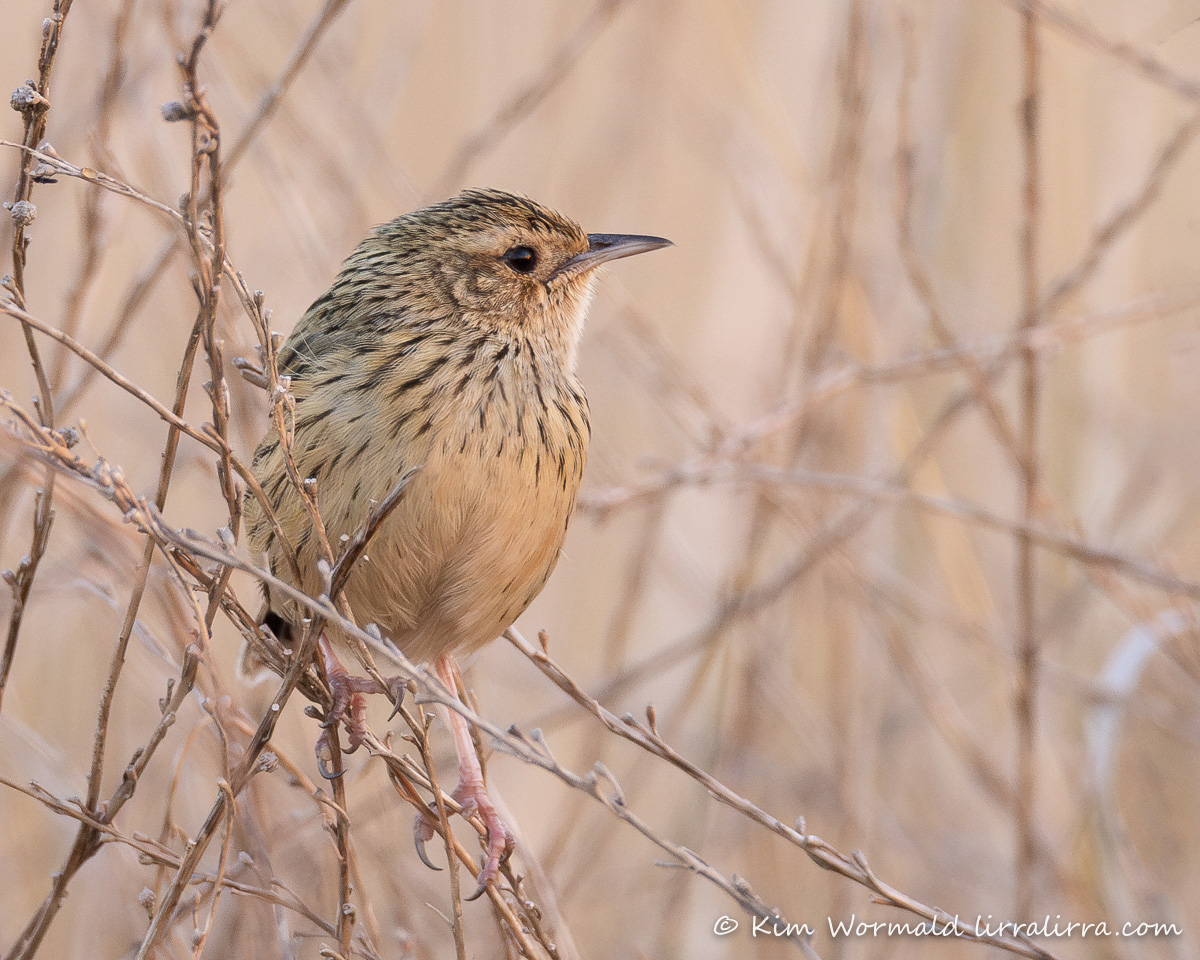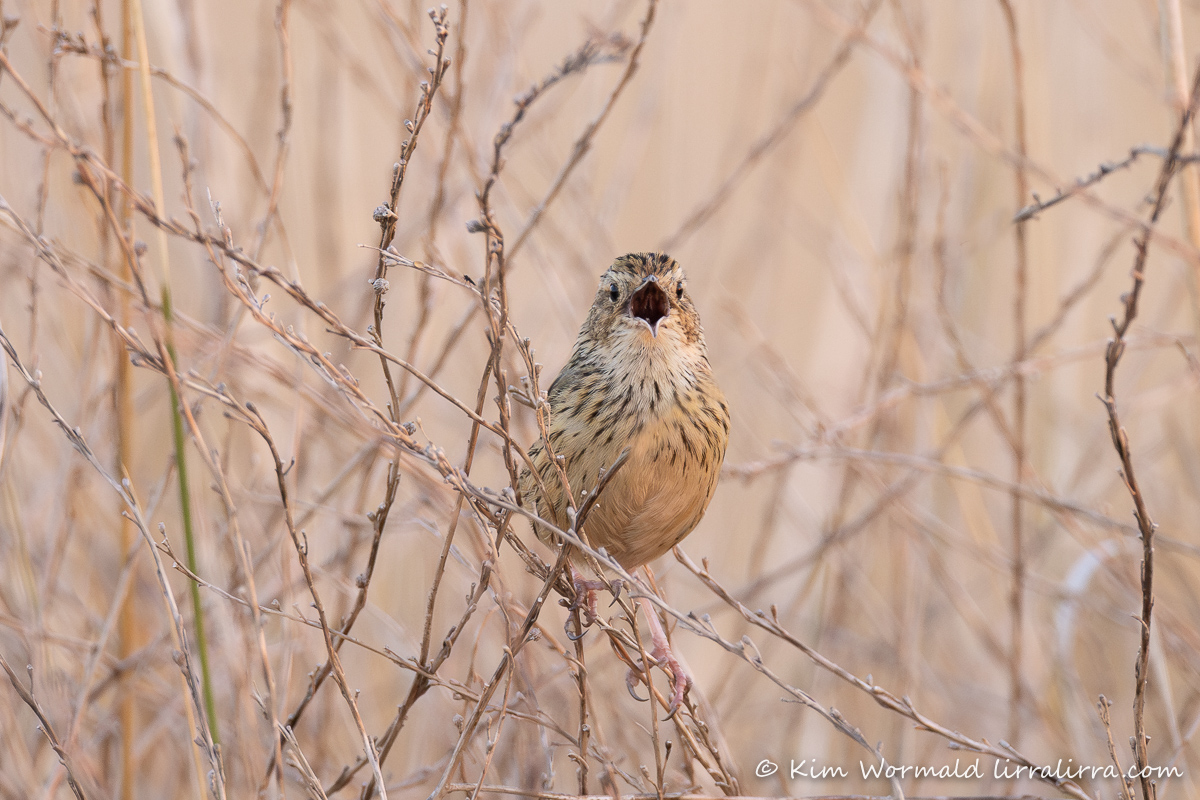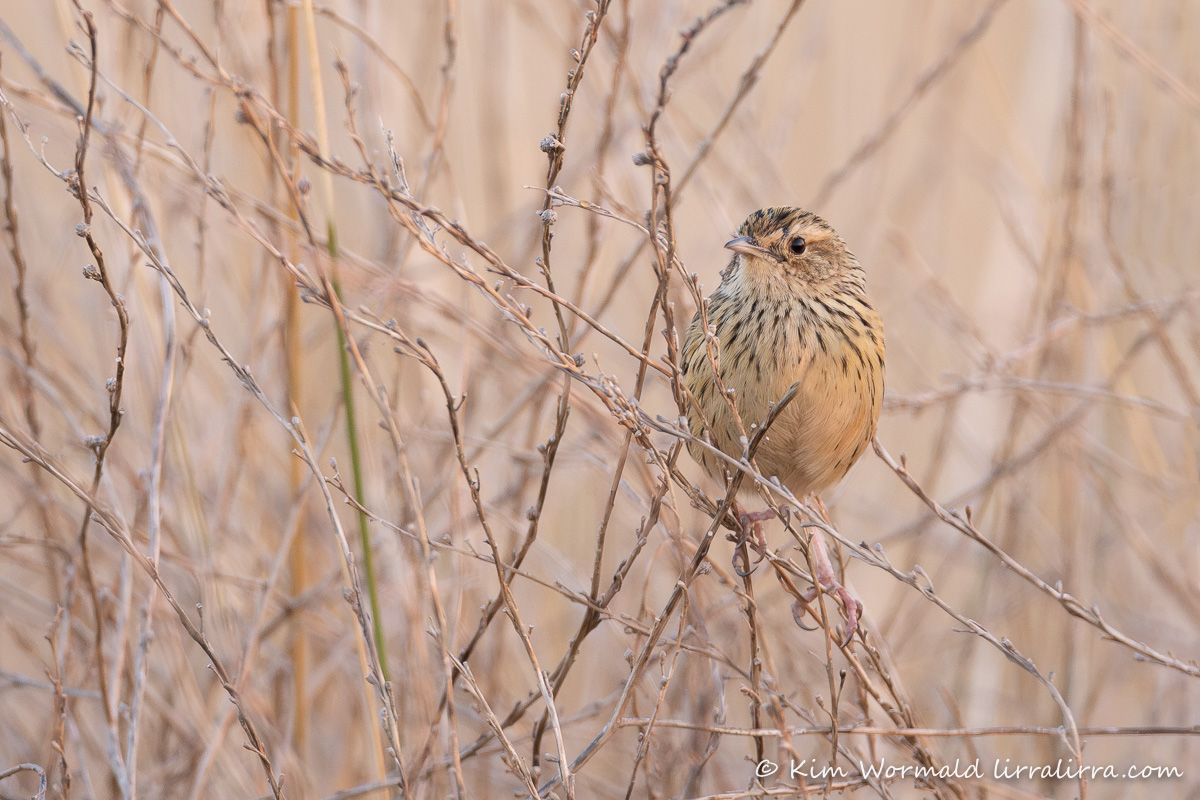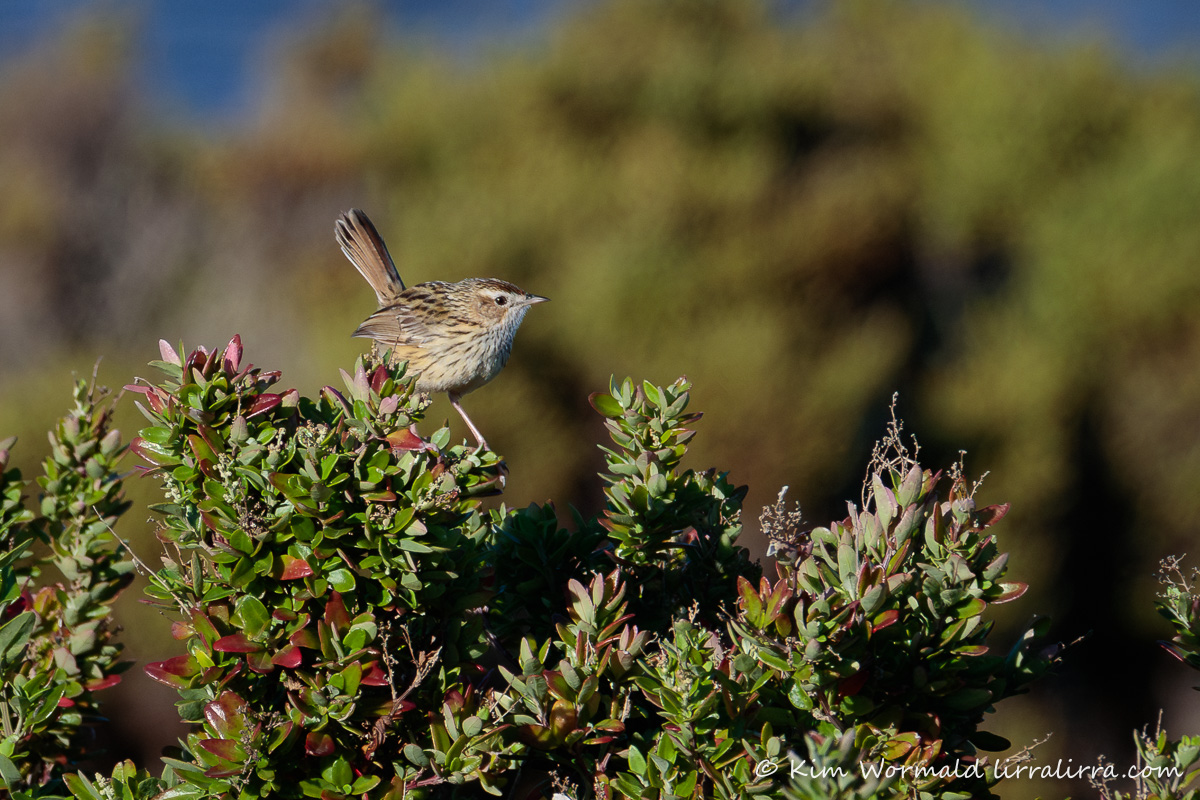I very, very rarely get see this exquisite little bird and I get to photograph it even less often. I’ve seen it three times in the past few years, the first time was a bit controversial and the recent siting was a bit funny.

1/800, f/4.0, ISO 2500, handheld
Canon R5, Canon RF 600 f/4 L IS USM
I took these photographs moments before sunset on the day I saw the amazing American Golden Plover at Werribee’s Western Treatment Plant. We’d wandered down to the Austin Road area where a beaut group of eight Brolga were interacting with each other with ungainly grace.

1/800, f/4.0, ISO 2500, handheld
Canon R5, Canon RF 600 f/4 L IS USM
The light was so poor that I had to use high ISO and a low shutter speed for handheld shots with a heavy lens. On top of that the three shots are heavily cropped. These points had me thinking I was photographing a distant Golden-headed Cisticola – both species are 11-12cm. It wasn’t until I checked the shots that I realised what I’d been watching.

1/800, f/4.0, ISO 2500, handheld
Canon R5, Canon RF 600 f/4 L IS USM
I think Striated Fieldwrens are pretty gorgeous. I’m always fond of birds with warm colours like this and I especially like their bold, blackish streaks. Something you may not have noticed are its pinkish legs and feet.

The shot above is one I took several years ago. It shows the Striated Fieldwren’s usual stance with its tail cocked. It was also a few years ago that I was taking some interstate visitors around the treatment plant as part of a birding conference. Striated Fieldwrens are often difficult to see as they forage in low, dense foliage, although they sing from the top of shrubs during the breeding season and will also emerge sometimes to investigate visitors. And this is what caused the problem. We caught a glimpse of a Striated Fieldwren as it popped up from the saltbush. It didn’t stay long enough for a photograph, preferring to dive back into cover. The visitors wanted to use callback, to play a recording of the bird’s warbling trilling call, to entice it back into view so they could capture a photograph. Striated Fieldwrens have a fairly limited range along the coastal areas of South Australia across Victoria to New South Wales, and Tasmania so it wasn’t a bird they couldn’t see in their home state.
I understand the frustration of this but I am passionately opposed to using callback as I believe that a photograph is not as important as the subject. I can’t understand why anyone who cares about birds would want to disturb them just to get a shot. There can be serious implications for birds that are disturbed in this way, it can impact their energy levels, their breeding capacity and their nesting success. I have spent years hoping to see a Mallee Emu-wren. On my last visit I was on a track they are known to inhabit when a couple of birders stopped for a chat and were pretty shocked that I chose not to use playback. I shudder at the thought of the number of times those poor birds are disturbed. Hopefully I’ll get to see them one day!
I have been interviewed about ethical bird photography, and a Birding Today video podcast, and an article can be found on my ethics page: Kim Wormald lirralirra – Ethics
So, no apologies that the photographs of this beautiful bird aren’t clearer – hopefully one day they’ll be happy to pose for me a little closer and in better light.
Happy birding, Kim
~ Prints and gifts Lirralirra Shop
~ Facebook page Kim Wormald – lirralirra
~ Facebook group Ethical Bird Photography

Thanks for sharing the gorgeous photos and for explaining so clearly the ethical reasons for not using playback. I was recently staying with my sister on the Sunshine Coast and she used payback to bring her much-loved butcher birds to her balcony. I informed her that this wasn’t good practice, and she took it on-board, but I wasn’t able to clearly explain the repercussions for the birds. You so clearly articulate the reasons why playback shouldn’t be used, and I’ll forward your explanation to my sister. Thanks Kim.
What a beaut comment to find in my inbox Liz. I’m so pleased that you, and hopefully your sister, found it helpful. I added a link to the Birding Today podcast in my Ethics Page (in case you are interested), Kim
Thanks so much Kim. Love your work
Just an example of more entitled people thinking they have the right to boss wildlife about. Sadly, very few people have your moral scruples, Kim. Using callback to trick these poor birds into returning, reminds me of those callous duck hunters, who blow into those duck call whistles to lure in their victims. Not cricket.
I am hopeful that more people are understanding, and that more people are feeling empowered to speak out when they see something that’s an issue.
Thank you for both the photos of this pint sized charmer and for your ethics.
It’s such a beaut little bird. I honestly don’t understand how anyone can feel good about taking a photograph that may have harmed the subject. Though word is definitely getting around so hopefully more and more people will understand the potential for harm.
A sweet little bird!
Very!